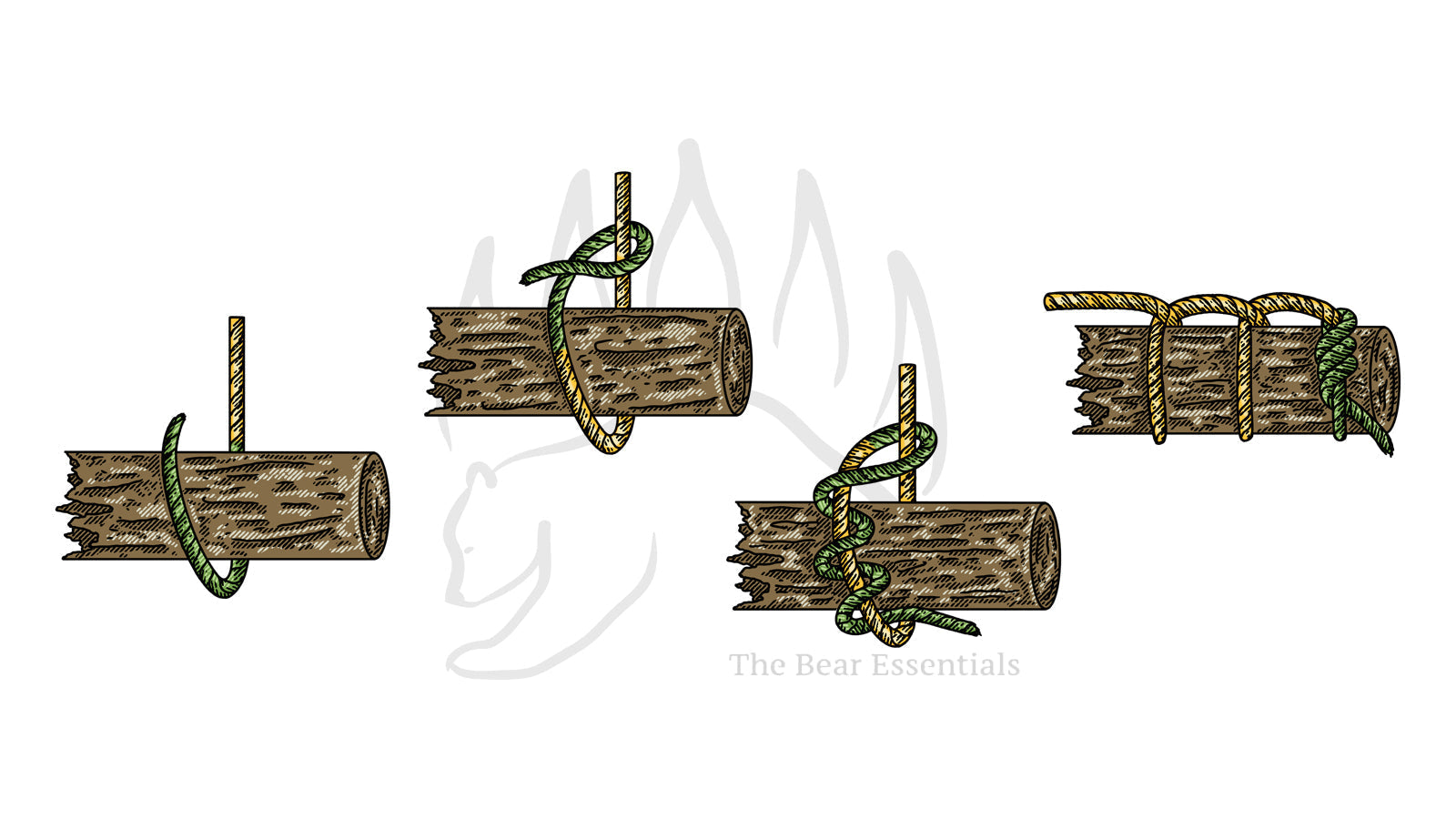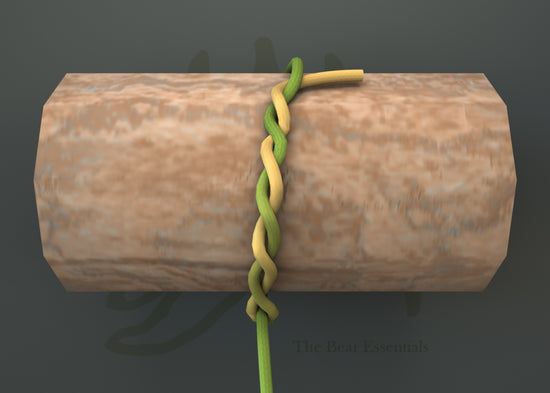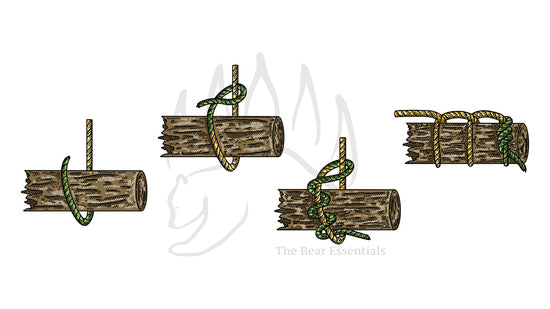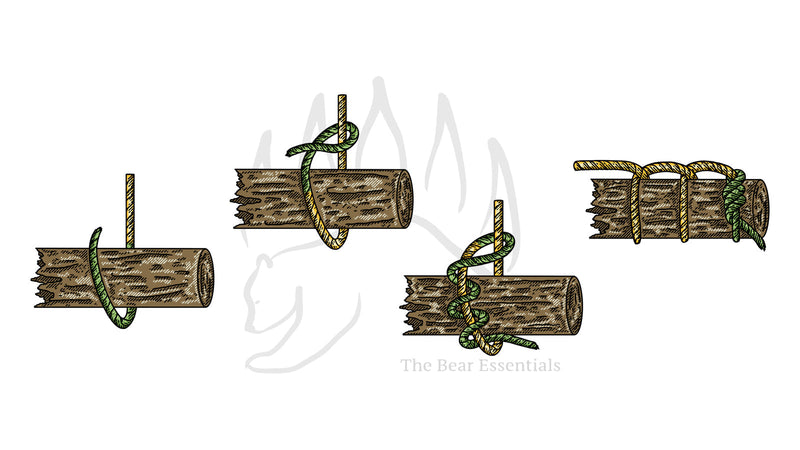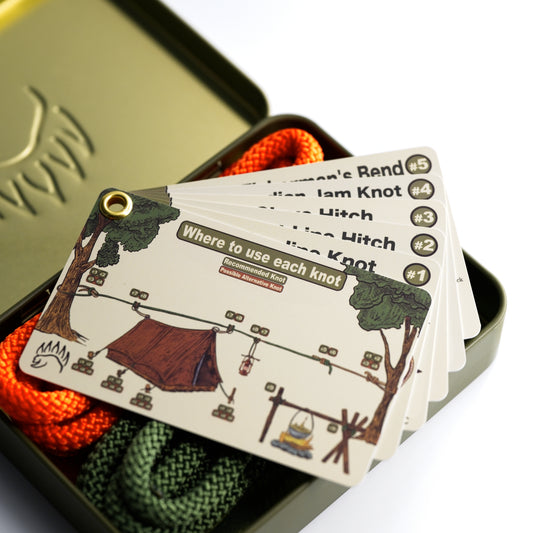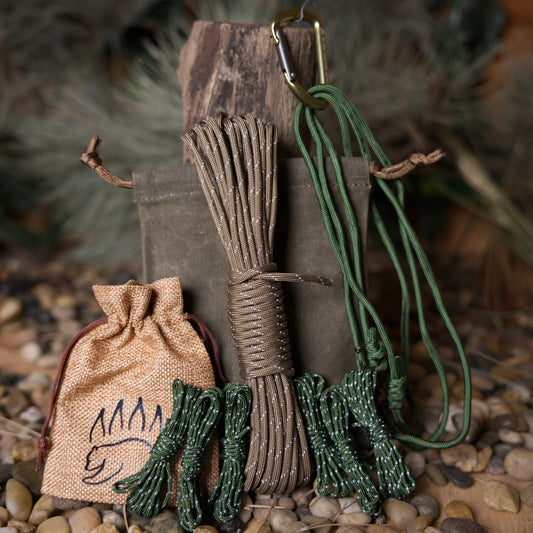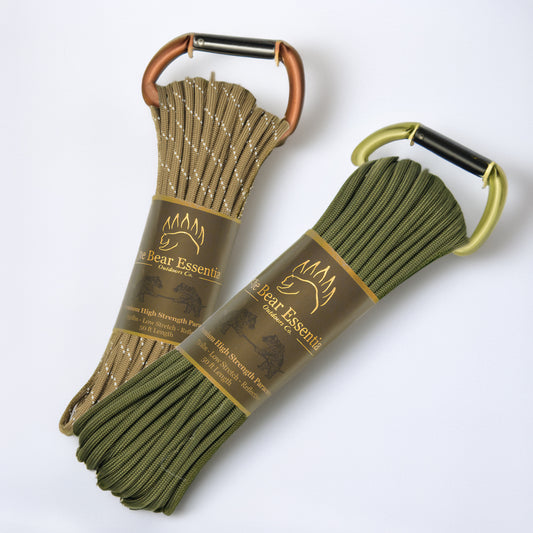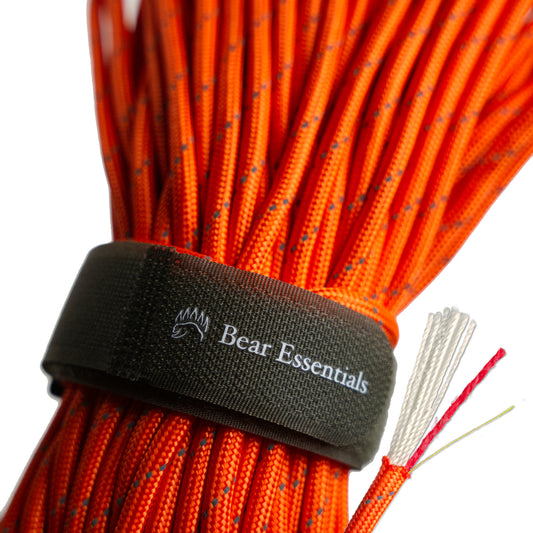How to Tie the Timber Hitch
Usage
The Timber Hitch is an essential knot for outdoor and utility tasks. It’s specifically designed for securing large, cylindrical objects like logs or poles, making it highly valuable in hauling, rigging, and bushcraft applications. Its simplicity allows for quick tying, and it holds securely under tension while remaining easy to untie once the load is removed.
Why Learn This Knot?
Its adaptability to different-sized objects and ability to handle heavy tension make it an indispensable skill for bushcraft, camping, and hauling operations. It’s primarily used for bundling and moving logs, as the name suggests.
Common Uses
-
Bushcraft and Camping:
- Securing logs or poles for shelter construction.
- Attaching ropes to trees for tarp setups or ridgelines.
-
Utility and Hauling:
- Hauling or dragging logs or timber.
- Bundling cylindrical objects for transport.
-
Scouting and Survival:
- Tying off equipment during outdoor activities.
- Creating secure holds for temporary shelter-building projects.
ABOK Number(Ashley Book of Knots)
Other Names
TypeAnchor/End Loop Knots |
Notable Features
- Quick to Tie: Requires minimal steps, making it fast and efficient.
- Secure Under Load: The knot tightens under tension for a reliable hold.
- Easy to Untie: Even after heavy use, the knot remains easy to undo.
- Adaptable: Suitable for various object sizes and shapes, especially cylindrical ones.
Similar Knots
Clove Hitch vs. Timber Hitch
- Pros: Quick and simple to tie, making it ideal for temporarily securing a rope to a post or pole.
- Cons: Less secure under heavy tension compared to the Timber Hitch.
Constrictor Knot vs. Timber Hitch
- Pros: Provides an extremely tight and secure hold, great for permanent fastening.
- Cons: Difficult to untie after bearing heavy loads, unlike the Timber Hitch.
Rolling Hitch vs. Timber Hitch
- Pros: Offers excellent grip on slippery or smooth surfaces, holding firmly under tension.
- Cons: Slightly more complicated to tie compared to the simple Timber Hitch.
History
The Timber Hitch has its origins in maritime and logging traditions, where it was used extensively to secure logs for hauling or towing. Its simplicity and adaptability have made it a staple in outdoor activities like bushcraft, camping, and arborist work. The knot’s ability to tighten under tension while remaining easy to untie has ensured its popularity across various industries and scenarios.
Security Level
The Timber Hitch is highly secure under tension, making it ideal for hauling or dragging objects. However, it is not recommended for dynamic or life-critical applications where consistent tension cannot be maintained.
Downsides
- Limited Scope: Best suited for cylindrical objects like logs or poles.
- Requires Tension: The knot’s effectiveness depends on maintaining constant tension.
Structure
- Wrap the rope around the object (e.g., log or pole).
- Pass the working end around the standing part of the rope.
- Make three or more twists around the standing part with the working end.
- Pull the knot tight to secure it.
FAQ
What is the Timber Hitch used for?
The Timber Hitch is commonly used for hauling logs, bundling poles, or securing ropes to cylindrical objects.
Is the Timber Hitch suitable for climbing?
No, the Timber Hitch is not recommended for climbing or life-critical applications due to its reliance on tension for security.
How does the Timber Hitch compare to the Clove Hitch?
While the Clove Hitch is faster to tie, the Timber Hitch offers greater security under tension and is better for hauling loads.
Can the Timber Hitch be tied with synthetic ropes?
Yes, but synthetic ropes may require additional wraps to prevent slippage.
How do I untie the Timber Hitch after use?
Simply release the tension and unwind the twists to undo the knot.
Important Notes on Safety
The Timber Hitch is ideal for temporary applications and should not be used in situations requiring dynamic loads or life-critical security. Always verify that the knot is properly dressed and tensioned before use to prevent accidents.

